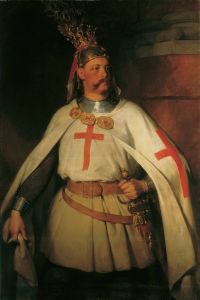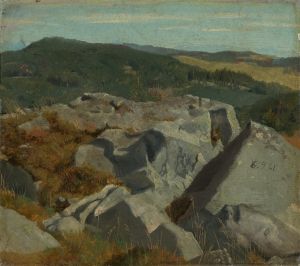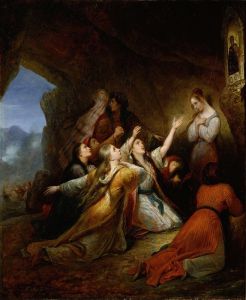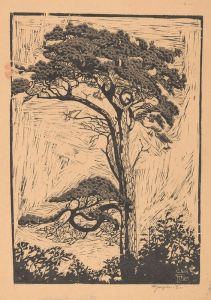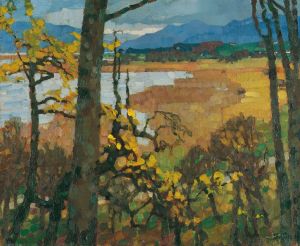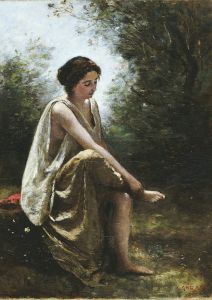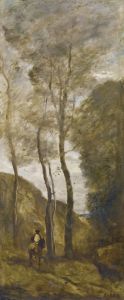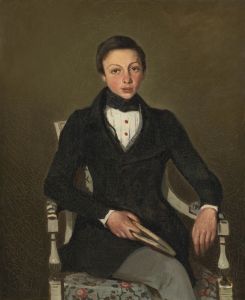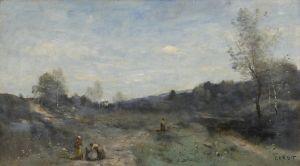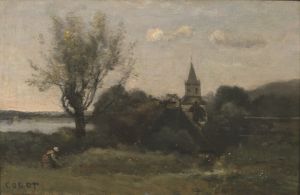
Forest Landscape
A hand-painted replica of Jean-Baptiste-Camille Corot’s masterpiece Forest Landscape, meticulously crafted by professional artists to capture the true essence of the original. Each piece is created with museum-quality canvas and rare mineral pigments, carefully painted by experienced artists with delicate brushstrokes and rich, layered colors to perfectly recreate the texture of the original artwork. Unlike machine-printed reproductions, this hand-painted version brings the painting to life, infused with the artist’s emotions and skill in every stroke. Whether for personal collection or home decoration, it instantly elevates the artistic atmosphere of any space.
Jean-Baptiste-Camille Corot was a pivotal figure in landscape painting during the 19th century, known for his contributions to the Barbizon School and his influence on the Impressionist movement. One of his notable works is "Forest Landscape," which exemplifies his mastery in capturing the serene beauty of natural environments.
Corot was born in Paris in 1796 and began his artistic career relatively late, at the age of 26. He studied under Achille-Etna Michallon and Jean-Victor Bertin, both of whom were proponents of the Neoclassical tradition. However, Corot's style evolved as he became more interested in painting directly from nature, a practice that was gaining popularity among artists who sought to break away from the rigid conventions of academic art.
"Forest Landscape" is a testament to Corot's ability to blend realism with a poetic sensibility. The painting captures a tranquil scene within a forest, characterized by its soft, diffused light and harmonious composition. Corot's use of a muted color palette and delicate brushwork creates a sense of calm and introspection, inviting viewers to immerse themselves in the peacefulness of the natural world.
Throughout his career, Corot was known for his plein air painting technique, where he would paint outdoors to directly observe the effects of light and atmosphere. This approach allowed him to develop a keen sensitivity to the subtleties of nature, which is evident in "Forest Landscape." The painting reflects Corot's interest in the interplay of light and shadow, as well as his ability to convey the mood and atmosphere of a particular moment in time.
Corot's landscapes often feature a balance between detailed foreground elements and softer, more abstract backgrounds. In "Forest Landscape," the trees and foliage are rendered with a gentle precision, while the background recedes into a misty, dreamlike space. This technique not only enhances the depth of the composition but also imbues the scene with a sense of timelessness and tranquility.
"Forest Landscape" is representative of Corot's mature style, which seamlessly integrates elements of realism and idealism. His work had a profound impact on subsequent generations of artists, particularly the Impressionists, who admired his ability to capture the fleeting effects of light and atmosphere. Corot's influence is evident in the works of artists such as Claude Monet and Camille Pissarro, who expanded upon his innovations in their own explorations of color and light.
In addition to his technical prowess, Corot was also celebrated for his ability to evoke emotion through his landscapes. "Forest Landscape" is no exception, as it conveys a sense of serenity and contemplation that resonates with viewers. The painting invites reflection on the beauty and tranquility of nature, a theme that was central to Corot's artistic vision.
Jean-Baptiste-Camille Corot's "Forest Landscape" remains an important work within the canon of 19th-century landscape painting. It exemplifies his unique ability to blend observation with imagination, creating scenes that are both realistic and imbued with a sense of poetic beauty. Through his innovative approach to capturing the natural world, Corot left a lasting legacy that continues to inspire artists and art enthusiasts alike.





